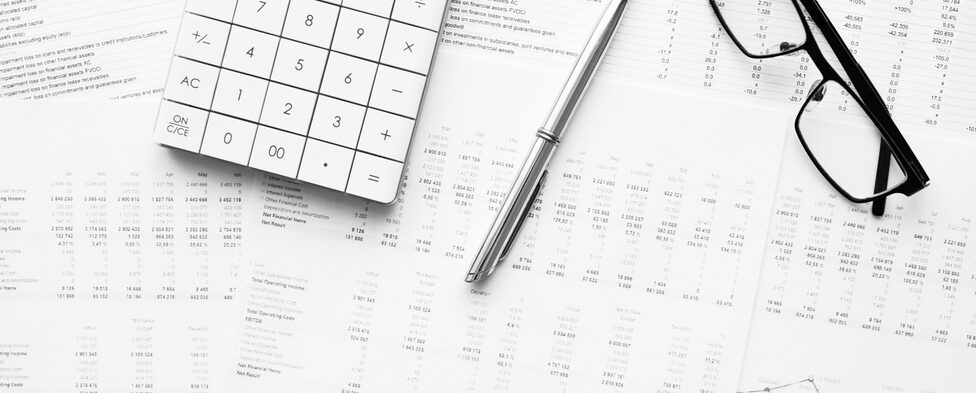In the past 10 years, the number of roles that have required a license to operate has steadily increased—today, even funeral attendants in Massachusetts and florists in Louisiana must hold a license. Often, such requirements are established in the name of consumer protection. In his 2015 article, “The Multiple Justifications of Occupational Licensing,” Nick Robinson analyzes what licensure does for society and the professions. Drawing from sociologists such as Émile Durkheim and Talcott Parsons, Robinson explains that demarcating who might enter a profession can help “set enforceable standards” and celebrate and protect “the use of expertise in modern society.” Both economists and sociologists argue that licensure might protect the public from harm and ensure greater attention to health and safety, provide a community of knowledge and professional identity to those in the profession, as well as raise wages for licensed individuals.
Yet, licensure is not without its critics. In the 1960s, noted economist Milton Friedman criticized the rise of occupational licensure. Licensure restricts innovation, dilutes competition, and drives costs up, he argued. More recently, scholars from across the economic-thought spectrum have argued that it is a barrier to economic mobility and can drive inequity. The time and money spent on school, testing, and supervised practice may inhibit early earning potential, further compounding historical disadvantages. Indeed, President Obama’s administration released the report “Occupational Licensing: A Framework for Policymakers” in 2015, which noted that licensure can succumb easily to predatory practices such as high exam fees and the introduction of seemingly arbitrary requirements to enter professions. It can also raise costs for consumers and create exclusionary markets. Economist Morris Kleiner has documented other disadvantages: the state regulation of professions, which restricts labor mobility, and insufficient evidence that licensure even increases product quality or protects consumers.
Today, even funeral attendants in Massachusetts and florists in Louisiana must hold a license
The legal profession, of course, is not immune to these debates. As Deborah Jones Merritt, Andrea Anne Curcio, and Eileen Kaufman have documented in “Practice-Ready Licensing,” the process by which licensure takes place may be worth reforming. Few would argue that lawyers should have no licensure rules. But are the series of exams and schooling accomplishing what they set out to do? Are such licensure rituals testing for minimum competence?
To help the legal profession think through these challenges, we dive into another profession—accounting. How are accountants thinking about licensure reform? Where has progress been made? What are the barriers to change? And what might lawyers learn from their story?
Licensing the accountant
Since 2016, the number of accounting graduates is down almost 20 percent. According to an American Institute of Certified Public Accountants report, the 2021–2022 academic year saw a 7.8 percent decrease in undergraduate accounting majors and a 6.4 percent decrease in master’s degree hopefuls. It comes as no surprise then that corporate America faces a national accountant shortage—between 2019 and 2022, “more than 300,000 U.S. accountants and auditors left their jobs”, according to the Society for Human Resource Management.
At the same time, the need for CPAs is only growing—job openings are “projected to grow roughly 4 percent” over the next decade, according to the Bureau of Labor Statistics. “Globalization, a growing economy, and a complex tax and regulatory environment are expected to continue leading the strong demand for accountants and auditors,” the BLS website explains. There simply are not enough accountants available to do the work required.
To address this problem, accounting professionals have asked: Could licensing reform be an answer to our problems? Could changing the barrier to entry while thinking more holistically about minimum-competence requirements be a solution? And how might that be done so that more day-one practice-ready CPAs are created in an equitable manner? In short, as accountants consider pipeline issues, licensure has become a hot topic.
National [accounting] organizations have been examining everything from education requirements to the exams candidates must take in each region, but the biggest debate in trying to understand barriers to entry alongside preparing practice-ready accountants is, without a doubt, the 150-hour rule.
To help answer these questions and offer comparative insights to the legal profession, The Practice spoke to Mark Dawkins, a professor of accounting at the Coggin College of Business at the University of North Florida. Dawkins has an impressive group of letters after his name—Ph.D. (Doctor of Philosophy), CPA (Certified Public Accountant), CMA (Certified Management Accountant), CGMA (Chartered Global Management Accountant), M.B.A. (Master of Business Administration), and M.A.C.C. (Master of Accounting). He’s completed all of the education as well as the necessary licensure processes. When he says that the licensure process to become an accountant deserves a second look, he speaks from authority.
While becoming a CPA is formally regulated on a state-by-state basis—much like attorney licensure—Dawkins notes that there are important national requirements (again, similar to the National Conference of Bar Examiners processes in law). For instance, candidates sit for a uniform CPA exam across the country, making it easier for CPAs, once licensed, to work between states and move their practice. But there are also significant state-by-state differences. While Massachusetts requires CPA candidates to also record supervised work experience in the field before taking the CPA exam, others, such as Colorado, do not. National organizations have been examining everything from education requirements to the exams candidates must take in each region, but the biggest debate in trying to understand barriers to entry alongside preparing practice-ready accountants is, without a doubt, the 150-hour rule.
Hours
Florida, where Dawkins lives and works, was the first state, in 1983, to begin requiring CPA candidates to have completed 150 hours of accounting education before receiving licensure. But before the 1980s, most states required only 120 hours before licensure—the equivalent of an undergraduate education in accounting. By 1988, the American Institute of Certified Public Accountants (AICPA), one of the large professional accounting associations, began likewise recommending that all states adopt this rule. As a result, more and more master’s programs sprang up to fill the need. This 150-hour rule was important for license reciprocity. Unlike for attorneys, who operate in different states on a case-by-case basis and who may be required to take additional state exams to practice in certain jurisdictions, a CPA designation is transferable everywhere—once the student has become licensed under the 150-hour rule, says Dawkins, which is a major reason that the National Association of State Boards of Accountancy (NASBA) promotes that reciprocity. But, as more individuals begin to question the necessity of those extra hours, that reciprocity has become threatened.
What does it matter if the number [of hours] is 120 or 150 if the students that are emerging are not practice-ready accountants—particularly in an industry where rules matter so explicitly.
Recently, however, many states have begun to explore ways of lowering the 150-hour requirement, despite NASBA’s continued insistence on its necessity. Minnesota, for instance, has proposed offering students licensure options. Currently, Minnesota CPAs must have 150 credit hours and one year of work experience before they are eligible to take the licensing exam. In a new proposal, students could opt for 120 credit hours but would be required to have two years of work experience in an accounting role. Similarly, in 2023 Oklahoma passed a bill that would require students to have at least 120 hours before taking the exam; before being considered licensed, they would still need to satisfy the extra 30 hours post-exam. Other states that have proposed changes include Ohio, Colorado, and South Carolina.
As immediate past president of the American Accounting Association (AAA), Dawkins made the pipeline problem his top priority. The 150-hour credit rule is the primary barrier to entry for the profession, and the accounting profession needs to contend with it if it wants to attract more students, he believes. Requiring students to take graduate classes means tuition costs and deferred earning potential. “If you can pass the exam at 120 hours, you’re a CPA full stop,” he says. “But the problem with the 150 hours is there are no set requirements for what that extra 30 hours should contain. In Florida, you have to complete six hours of accounting. Some states, it’s 12. Some states, it’s 18, but there is no standard.” Dawkins questions the validity of upholding a rule with such arbitrary provisions. Who decides what substance builds expertise? He says, “We have a 30-hour requirement in which every state decides what to do for the 30 hours. If we had a national standard, OK, I get it. Then, you can argue the additional 30 hours matters. It’s hard to argue this case when the states do not have equal requirements, even about just the accounting hours that are in the 30 hours.”
Education
Dawkins’s critique of the lack of a national standard is rooted in a broad critique of accounting education. What does it matter if the number is 120 or 150 if the students that are emerging are not practice-ready accountants—particularly in an industry where rules matter so explicitly. In 2021 the AICPA-NASBA conducted a gap analysis survey to understand what schools were teaching and how that aligned with what the market required. What the survey found was stark: a number of subjects that employers found critical were nowhere to be found in accounting education. For instance, only 64 percent of university personnel surveyed were offering classes on data analytics, and only 40 percent offered cybersecurity education, two subjects the market determined were critical for practitioners.
This gap analysis is particularly revelatory when considering hiring trends. The 2021 AICPA Trends Report reported that the number of nonaccounting graduates hired into roles that could be occupied by accounting majors was increasing—up to 42 percent from 31 percent the year before. While this trend has been attributed to technology skills required by increased auditing, Dawkins believes that universities must respond. “Firms are going to go find the talent they need,” he says. He continues:
It’s incumbent upon us to change our curriculum to meet the needs of the marketplace, and if we do not, then the firm should continue to hire four out of 10 or five out of 10 nonaccounting students. Because they have to run a service business. They need talent that can do the job, and if we are not giving them the talent, they should go find the talent wherever they can.
What do current curricula look like? A recent AICPA poll indicated the top needs that firms indicated included data analysis, advanced analytics, and advanced taxation. At North Florida, where Dawkins teaches, the university is revising its curriculum for the first time in 30 years, finally recognizing the changing industry.
If you complete the 30 hours of graduate education at a university, those hours contribute toward something—a master’s or a Ph.D.
Dawkins says that educational institutions face an additional challenge: Are faculty prepared to teach these new disciplines? He keeps his license active—a rarity in academia—and continues to do his own continuing education credits to remain in good standing as a CPA. Still, he says, “I finished my Ph.D. in 1994. There’s some stuff that I’m just not qualified to teach. I can do financial accounting, but I’ve got to upskill to be able to teach courses like data analytics and business intelligence topics.” He adds, “But that’s true of a lot of schools,” and he says, it’s imperative on faculty to care about the problem.
NASBA and AICPA have come up with their own solution to meet the extra-30-hours debate and crisis in the profession—the Experience, Learn, and Earn (ELE) Program—but it will have a significant impact on these conversations in education. ELE offers students the opportunity to do continuing education credits at a lower cost than the typical university graduate credit: $4,500 total or $150 per credit hour. The problem, as Dawkins sees it, is that ELE is seemingly set up to compete with accounting graduate programs at a price point that universities cannot match. Dawkins questions the value of the program, with the classes, offered through continuing education programs, providing nondegree credits. At least, he points out, if you complete the 30 hours of graduate education at a university, those hours contribute toward something—a master’s or a Ph.D. ELE might be the “path of least resistance” for students interested in getting over the licensure hump, but again, Dawkins points to the content of the hours. What substance will help someone achieve competence in the profession?
Exam
Hours and education are not the only issues, Dawkins emphasizes. Much like the NextGen bar exam (expected in 2025), the CPA Evolution Initiative will unveil a new CPA exam known in January 2024. Changes to the exam reflect a growing need within the marketplace to create students who can meet the demands of the firms. While the old exam tested students on four critical areas over the course of 24 months, the new exam is what they are calling a “core plus discipline” model. “The model starts with a deep and strong core in accounting, auditing, tax, and technology that all candidates will be required to complete. Then, each candidate will select a discipline in which to demonstrate deeper skills and knowledge,” the CPA Evolution Initiative explains. Students may choose from business analysis and reporting, tax compliance and planning, or information systems and control.
“The CPA exam is already viewed by students and young professionals as a difficult exam, and I fear the changes to the exam from the CPA Evolution Initiative will cause students and young professionals to view the new exam as even more difficult,” Dawkins says. “This has the potential to reduce CPA exam demand even further, which is not conducive to increasing licensed CPAs.”
But, Dawkins says, “there’s a lot of work that’s got to be done in our profession before they even get to the licensure point. We must get students the skill sets to be able to get jobs and know what to do and how to do it.”
Questions—and lessons—for the legal profession
As Joan W. Howarth explores in Shaping the Bar: The Future of Attorney Licensing, licensure for the bar exam used to happen differently. Huey Long and Clarence Darrow took ad hoc oral exams to become lawyers, as did many notable historical figures. However, with the rise of professional associations, like the American Bar Association and state boards of examination, processes became more formalized. Oral exams turned into written. Individualized state exams turned into the uniform bar exam. There are, no doubt, many “goods” that came alongside this standardization, including around client protection. At the same time, it is also a truism that law graduates almost always lack many of the “practice ready” skills employers and clients are looking for in a lawyer. They therefore almost always require significant on-the-job training to become effective advocates (for more on practice-ready lawyers, see “Advocating for Apprenticeship”). In this sense, the modern licensing regime in the legal profession is neither immutable nor perfect.
The accounting example compels us to consider how education relates to exam preparedness and practice-ready skills.
Given that, what should the legal profession take away from the accounting profession? On the broadest level, the challenges the legal profession faces are not unique to lawyers. Each profession grapples with its own debates on how it should evolve and grow.
The accounting example compels us to consider how education relates to exam preparedness and practice-ready skills. Why are licensing organizations so attached to the 150—as opposed to the 120—hour standard, particularly when so little determines what goes into those extra 30 hours? Better yet, how does education prepare students for practice? Who determines what skills or experiences make someone practice-ready? What is the best way to indicate, test, and track if someone is practice-ready?
Moreover, what is the relationship between state boards and national governing bodies when it comes to determining licensure? And what is the role of professional governance practices at all? What happens when lawyers “outsource” licensure to independent bodies outside the judiciary, as Marsha Griggs, associate professor at St. Louis University School of Law, asks. Griggs writes, “Self-regulation is a formative cornerstone of a lawyer’s professional identity and of the legal profession as a whole.” Why, then, she asks, have lawyers chosen to outsource their credentialing, with the associate dangers of regulatory capture and an increased lack of transparency into the licensing process?
While the legal profession has long thought itself unique, the debates going on in accounting offer important parallels. They offer an insight into both the challenges and opportunities that go along with change. And they offer the legal profession a point of comparison as it grapples with attempts to build a better bar, licensing regime, and profession.



